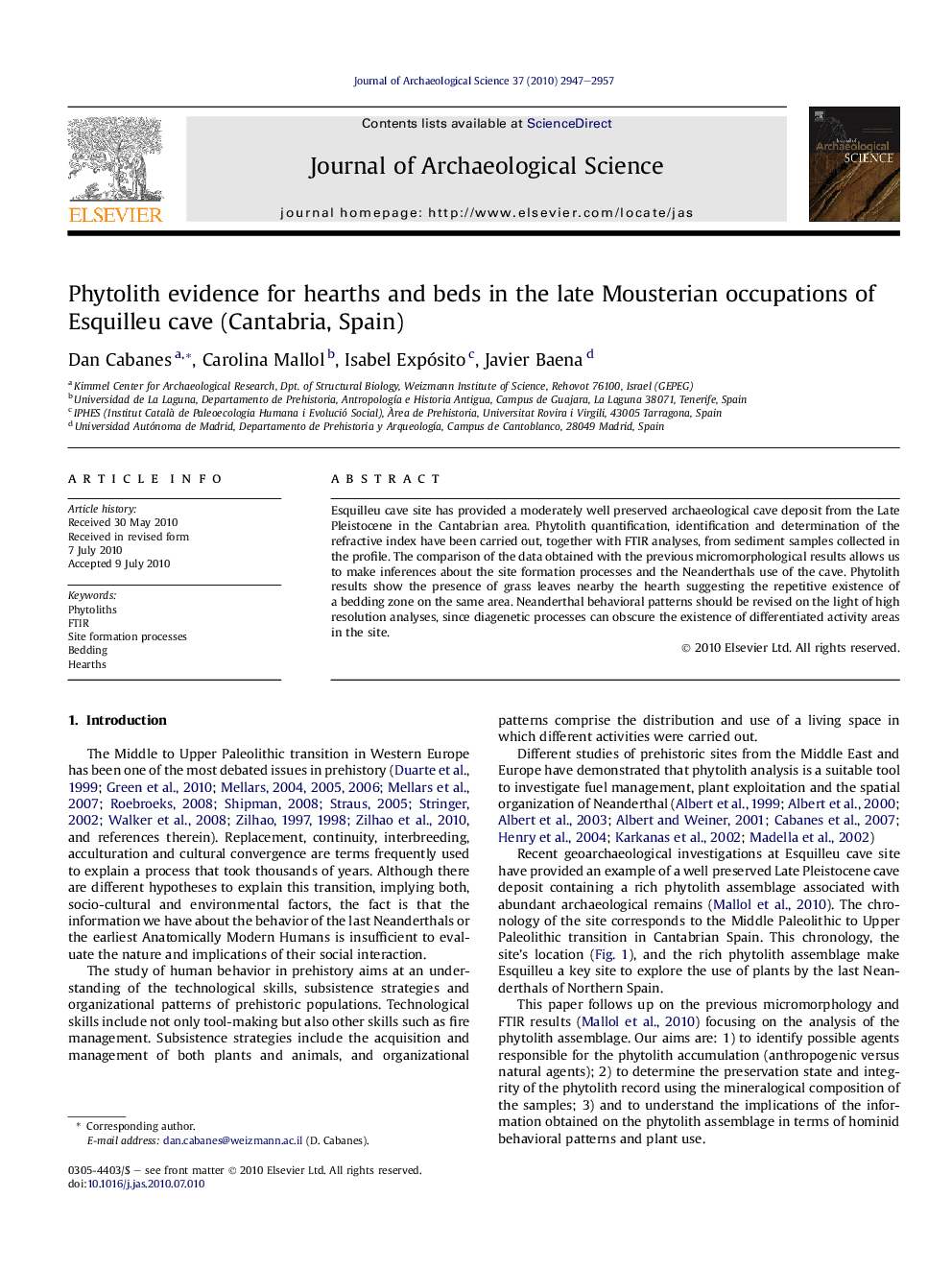| Article ID | Journal | Published Year | Pages | File Type |
|---|---|---|---|---|
| 1036491 | Journal of Archaeological Science | 2010 | 11 Pages |
Esquilleu cave site has provided a moderately well preserved archaeological cave deposit from the Late Pleistocene in the Cantabrian area. Phytolith quantification, identification and determination of the refractive index have been carried out, together with FTIR analyses, from sediment samples collected in the profile. The comparison of the data obtained with the previous micromorphological results allows us to make inferences about the site formation processes and the Neanderthals use of the cave. Phytolith results show the presence of grass leaves nearby the hearth suggesting the repetitive existence of a bedding zone on the same area. Neanderthal behavioral patterns should be revised on the light of high resolution analyses, since diagenetic processes can obscure the existence of differentiated activity areas in the site.
